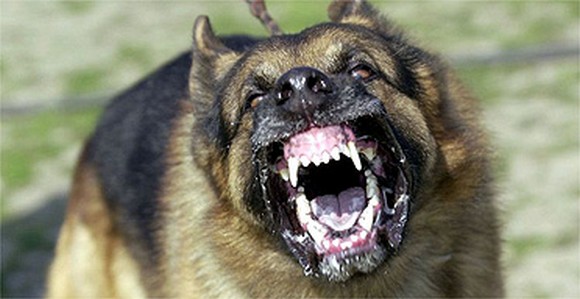I was recently walking a client’s dog when a neighbor’s dog escaped from its owner and ran up to us. Unfortunately, this dog began attacking my client’s dog. As I removed my client’s dog from the situation, the other dog bit me. Though it was a small dog, the bite still produced punctures. Upon relaying the occurrence to the dog’s owner, I found out this was not the dog’s first bite. The owner’s plan was to manage the dog by keeping him away from people. Obviously, this management technique does not always work, especially with small dogs who can easily run out a door undetected.
Management will always be a part of dealing with a dog who is aggressive in order to keep other people and dogs safe, however, management alone won’t help your dog as accidents do happen (e.g. doors and gates left open).
Over the years I have learned ninety-nine percent of dog aggression can be avoided if we socialize our dogs and teach them properly. Even if we are unsure about a rescue dog’s history, we can still help him to learn how to act appropriately around other dogs and humans. If you notice issues with your dog early on, get help immediately rather than wait until there is an incident. Many cases of aggression can be helped, however, a dog who bites more than once, or who causes extreme harm to another dog or human, may not get the chance to be helped as typically these incidences are handled by law enforcement or animal control and result in the dog being removed from its owner.
Steps for Aggression Prevention
1. Socialize, socialize, socialize. A puppy should meet at least 300 people in his first three months.
2. Associate people with good things such as treats. Strangers may give your dog treats on occasion, but I prefer you be the main source of treats in the presence of strangers.
3. Build your dog’s confidence by setting expectations, and teach him using positive techniques.
4. Teach foundation skills such as self-control, problem-solving and basic manners.
5. Allow your dog to play with other dogs on a regular basis. The more dogs he plays with the better he will be at using innate communication signals.
Aggression Training and Management
1. Locate a positive trainer who has experience dealing with aggression. Do not send your dog off to a “boot camp.”
2. Acclimate your dog to a basket muzzle. It’s imperative you associate positive things (treats) with the muzzle.
3. Manage all situations to prevent your dog from being put in stressful positions where aggression may occur.
4. Aggression in dogs cannot always be remedied, which is why strong management skills are key.
